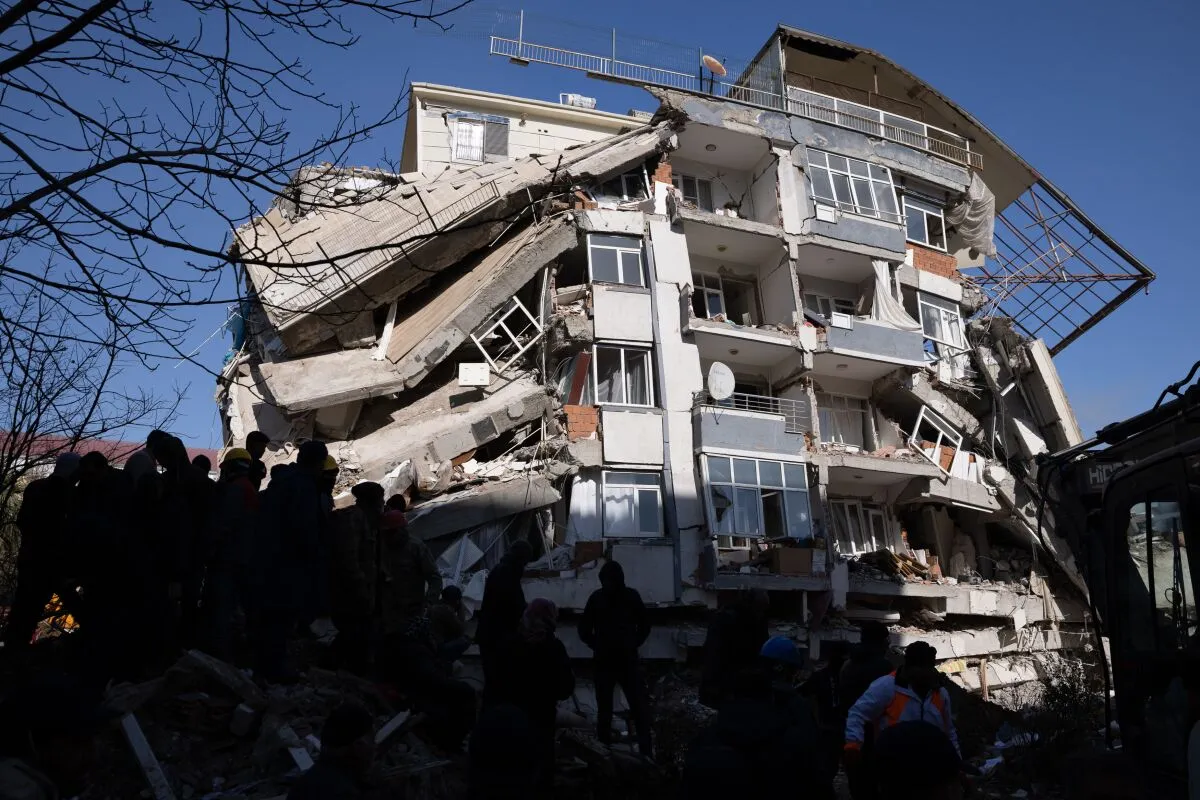Imagine you are sentenced to prison for having failed to predict the future. Although that may sound absurd, it almost occurred in Italy in 2012 when six seismologists and one local official were convicted of manslaughter for failing to warn citizens of a 6.3-magnitude earthquake that caused the deaths of more than 300 people in the central Italian town of L’Aquila. Fortunately, all of the scientists were exonerated in 2015, but the then-deputy-head of Italy’s Civil Protection Department, Bernardo De Bernardinis, was still found guilty of “negligence and recklessness.” The case led to widespread international outrage, with many experts speaking up against the innocent scientists. Following the guilty verdicts, more than 5,000 scientists signed an open letter to Italian President Giorgio Napolitano, arguing that the convictions represented a fundamental misunderstanding of earthquake science. In my opinion, scientists and local officials should not be blamed for failing to warn citizens of impending earthquakes because there is no way yet for mankind to accurately predict earthquakes, the conviction overlooks the role of public perception and education in disaster preparedness, and many areas around the world may have limited communication channels and poor infrastructure regardless of any ability to assess the likelihood of often unpredictable quakes.
First of all, scientists and local officials cannot be blamed for failing to warn citizens of impending earthquakes due to the inherent lack of predictability in seismic events. Earthquakes are complex geological phenomena, and despite scientific and technological advancements in recent decades, it remains nearly impossible to predict them precisely. As John Elliott of Oxford University’s Department of Earth Sciences observed, “Earthquakes cannot be predicted, and … it is unfair to have expected [these scientists] to have provided an exact and complete warning of an earthquake in the first place – this is something which is not yet credibly possible for earthquake science.” This tells us that humans are not yet capable of accurately predicting the occurrence of earthquakes, and blaming others for not having the capability to do so is simply unfair. Indeed, California’s much-lauded earthquake app, which alerts citizens of impending seismic activity through their smartphones, provides only about 19 seconds of advance warning – barely enough time for people to get away from windows, duck, and cover their heads Therefore, we should not blame scientists and local officials for failing to warn and prepare citizens for an earthquake due to the unpredictable nature of earthquakes.
Second of all, scientists and local officials should not be declared responsible for their failure to warn citizens of an impending earthquake because earthquake casualties are more likely to be caused by the lack of education, incaution, or poor decisions made by those who are injured or die. Many people underestimate the severity of earthquakes, which undermines their preparedness for such unpredictable seismic events. Even if scientists and local officials were to disseminate warnings prior to an earthquake, individual citizens are ultimately responsible for taking necessary precautions and seeking shelter. Matt Motta, a political scientist at Oklahoma State University, and his collaborator Andrew Rohrman, a civil engineer at the University of Massachusetts Amherst, suspected the reason the seismically vulnerable public does not demand that its elected officials do more to prepare for earthquakes might stem from a simple lack of awareness. To confirm their hypothesis, they surveyed 855 West Coast residents of the United States in the fall of 2018 and found that those living in areas most susceptible to catastrophic earthquake damage only seemed “modestly more concerned” about the hazard than individuals living in much safer areas, according to the paper published in July 2019 in the journal Behavioural Public Policy. This shows that not only are people in the most quake-prone areas low-balling their own risk, but they are also not clamoring for policy solutions like stricter building code requirements and development restrictions, which could lead to a disastrous result when a large earthquake strikes. Therefore, faulting scientists and local officials alone is unfair as it ignores the shared responsibility of individuals for taking appropriate measures to protect themselves.
Third of all, it is unjust to hold scientists and local officials solely responsible for earthquake deaths because such casualties may, in fact, be caused by poor local infrastructure, including limited communication channels for dealing with disasters. During a crisis, effective communication is crucial for warning the population. However, many individuals in underdeveloped countries may not have access to such means of communication such as phones, radios, or the Internet, thus jeopardizing their chance to protect themselves against the quake or find out where help can be accessed after a quake occurs. Furthermore, certain communities, especially those in remote areas or with marginalized groups of people, may not have the suitable infrastructure, such as shelters or secure basements, for responding effectively either to warnings or to the earthquakes themselves. For example, the capitals of Bangladesh, Bhutan, India, Nepal, and Pakistan all sit along the Himalayan plate boundary, with at least a million inhabitants. These rapidly growing, crowded megacities are filled with multistory concrete buildings that are likely vulnerable to earthquakes. Yet, per capita gross domestic product of Bangladesh is only about $2,600, making it difficult for the government of Bangladesh to build earthquake-proof infrastructure while devoting resources to economic growth at the same time. Hence, placing the blame solely on scientists and local officials is unfair because it fails to recognize systemic issues involving communication and infrastructure limitations.
Some may argue that if precursors of a potential earthquake happen, it is essential for scientists and local officials to communicate with and warn their citizens, thus minimizing the damage. When they fail to do so prior to the actual occurrence of a quake, they should be held responsible. They bring to mind an observation made in 2015 by Francesco Mulargia, a seismologist at the University of Bologna and a current member of the Major Risks Commission, who said: “[Although] ninety-nine times out of 100 a swarm won’t lead to a major earthquake… it is still an important warning sign.” However, such a belief is entirely misguided. When scientists and local officials, to the best of their ability, provide information and scientific advice to the public as accurately as possible, they should not be blamed for something solely based on probability and chance. “Our ability to predict earthquake hazards is, frankly, lousy,” said Seth Stein, a professor of Earth Sciences at Northwestern University in Illinois, addressing followers of LiveScience, a science news website. “Criminalizing something would only make sense if we really knew how to do this and someone did it wrong.” Furthermore, knowing whether small quakes are foreshocks for a larger temblor is impossible, according to seismologists. A 1988 study of other quake-prone Italian regions found, for example, that about half of large quakes were preceded by weaker foreshocks. But only 2 percent of small quake swarms heralded a larger rupture. Therefore, we should not blame scientists and local officials for their inability to warn their citizens about something that could not have been predicted in the first place.
In conclusion, scientists and local officials should not be blamed for failing to warn citizens to prepare for an earthquake because there is no way yet for mankind to accurately predict earthquakes, it overlooks the role of public perception and education in disaster preparedness, and many areas around the world may have limited communication channels and poor infrastructure. Instead of blaming, let us foster collaboration and support for scientific advancements that aim to improve our understanding of earthquakes. By investing in research, technology, and international cooperation, we can strive to develop better early warning systems, enhance our ability to respond to seismic events, and ultimately, mitigate the impacts of natural disasters.
 BlogPost
BlogPost